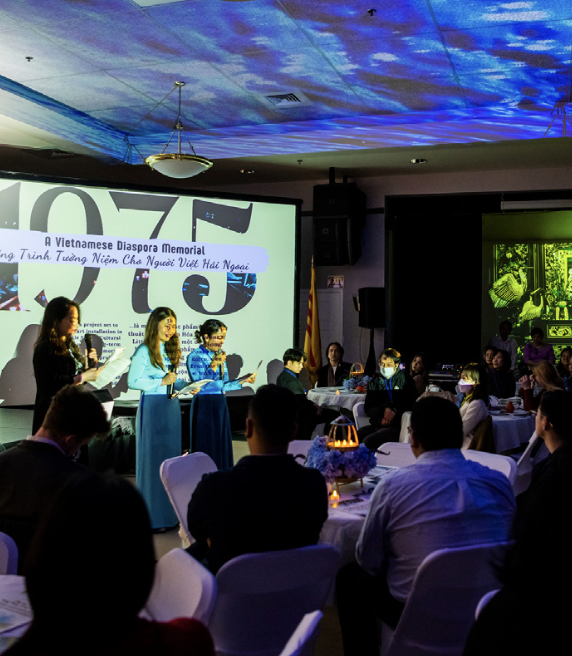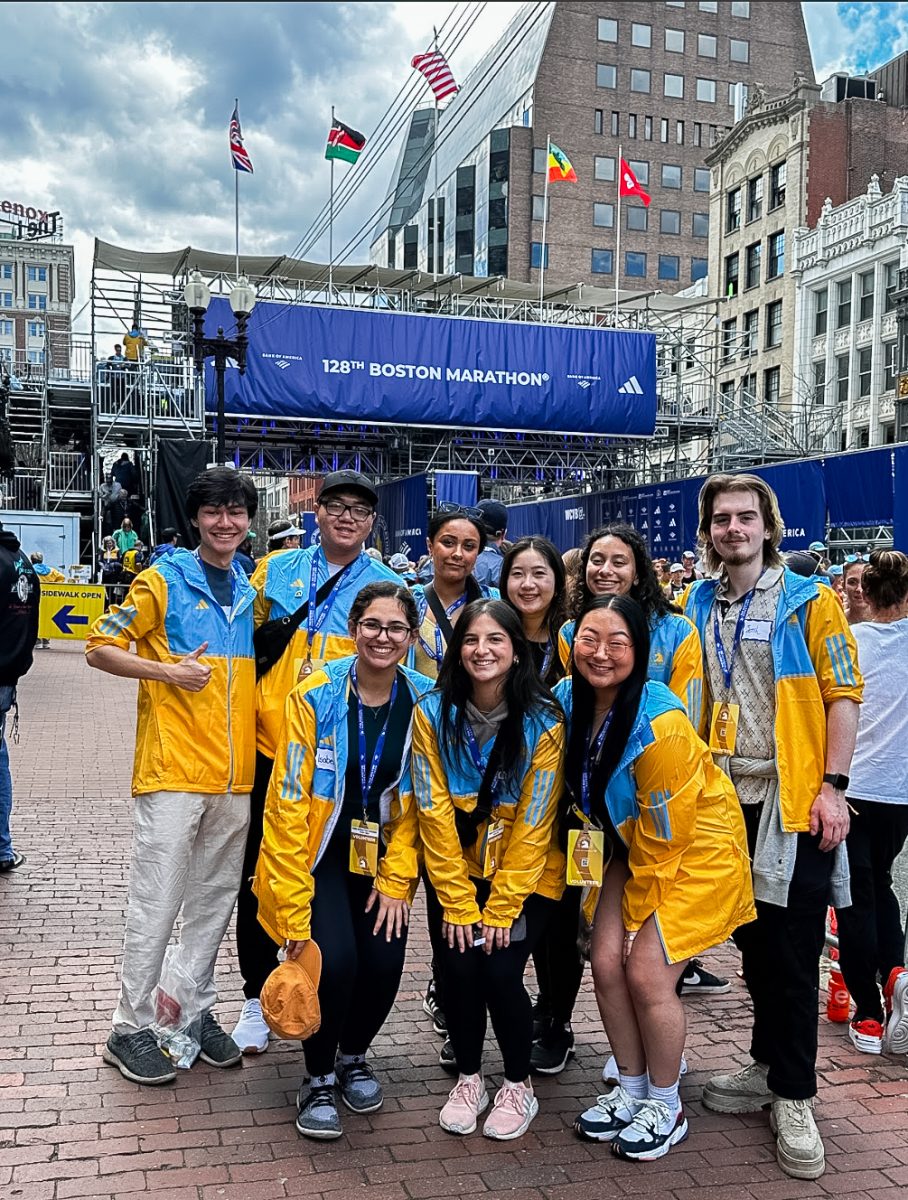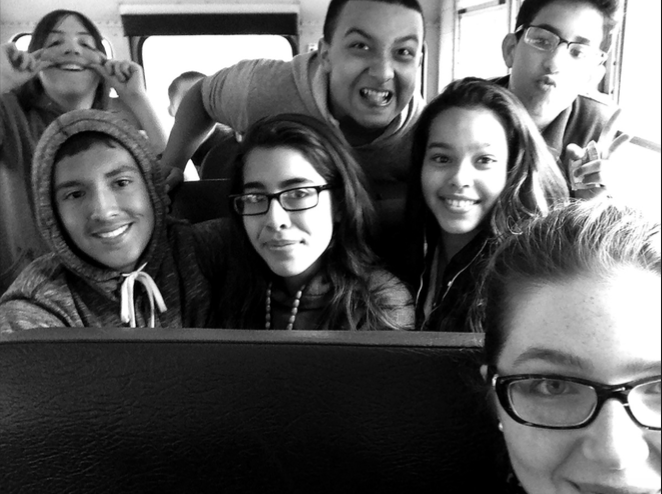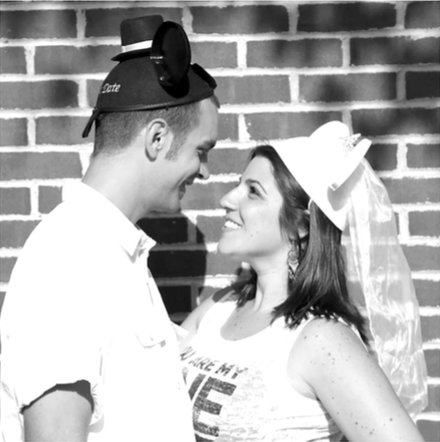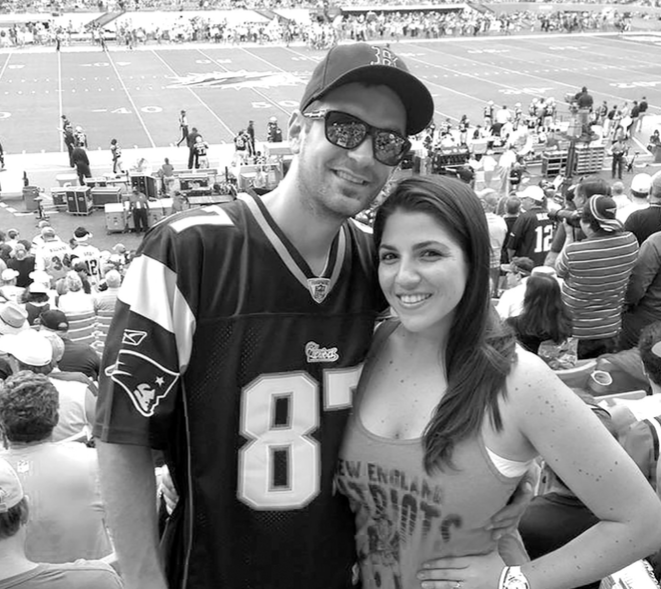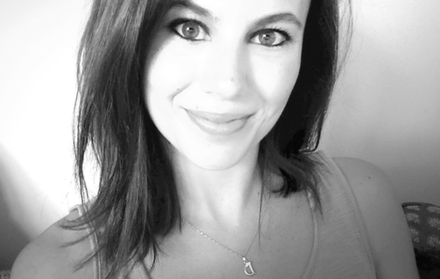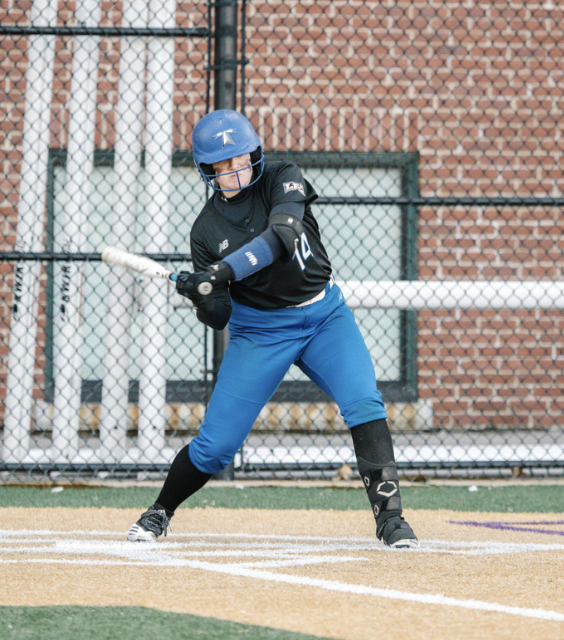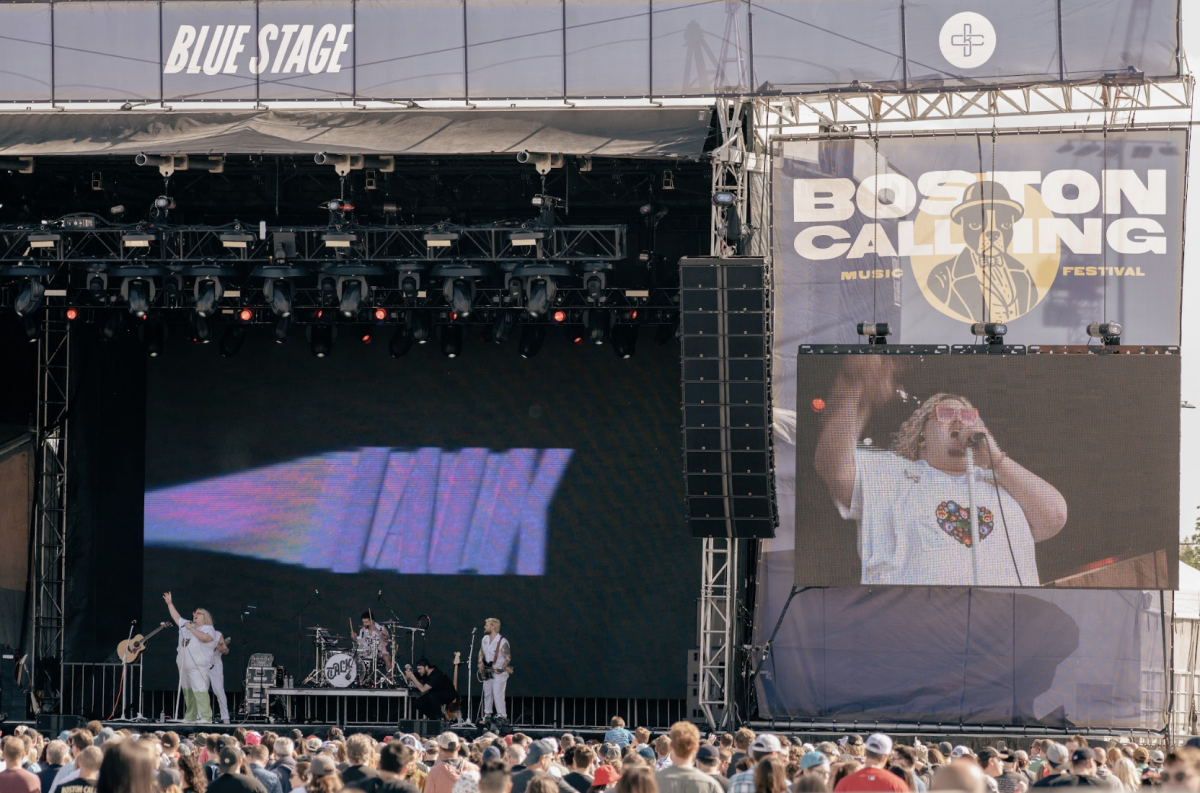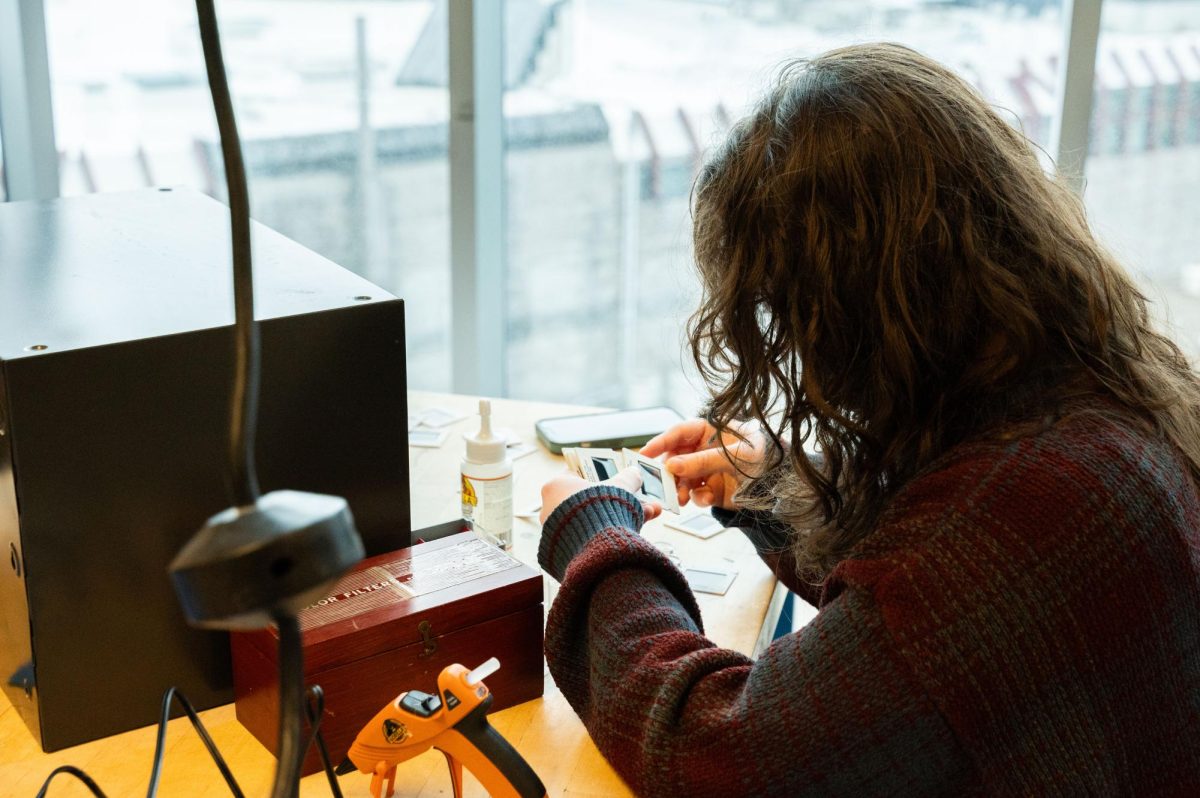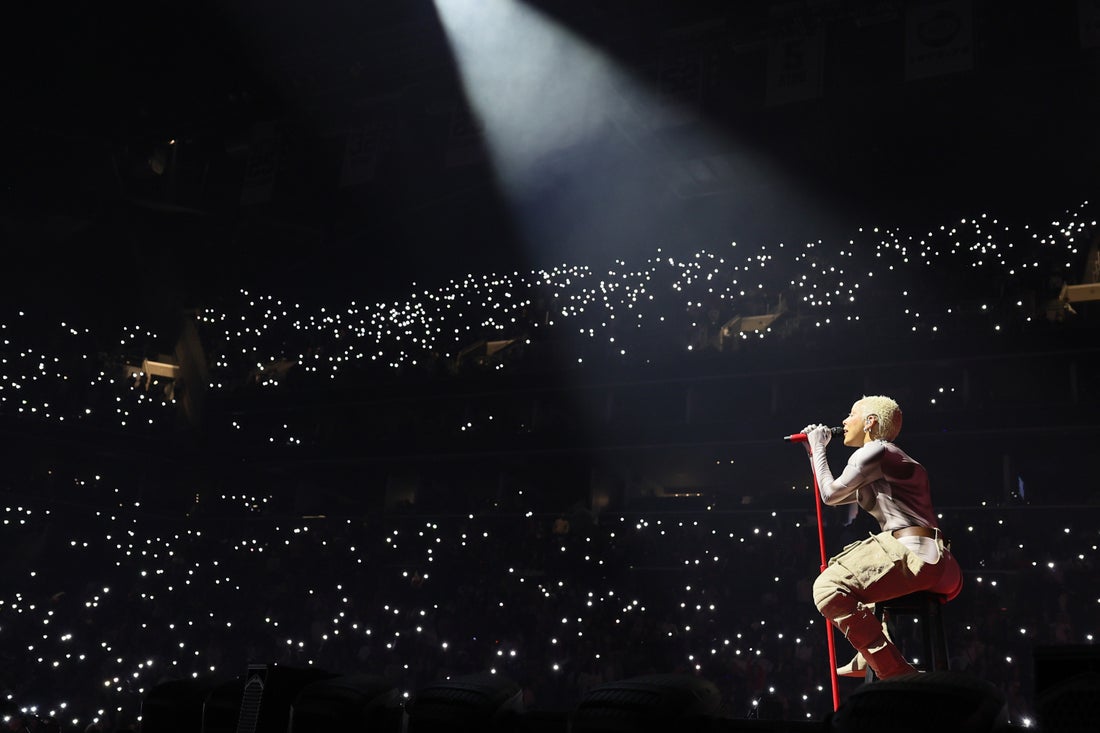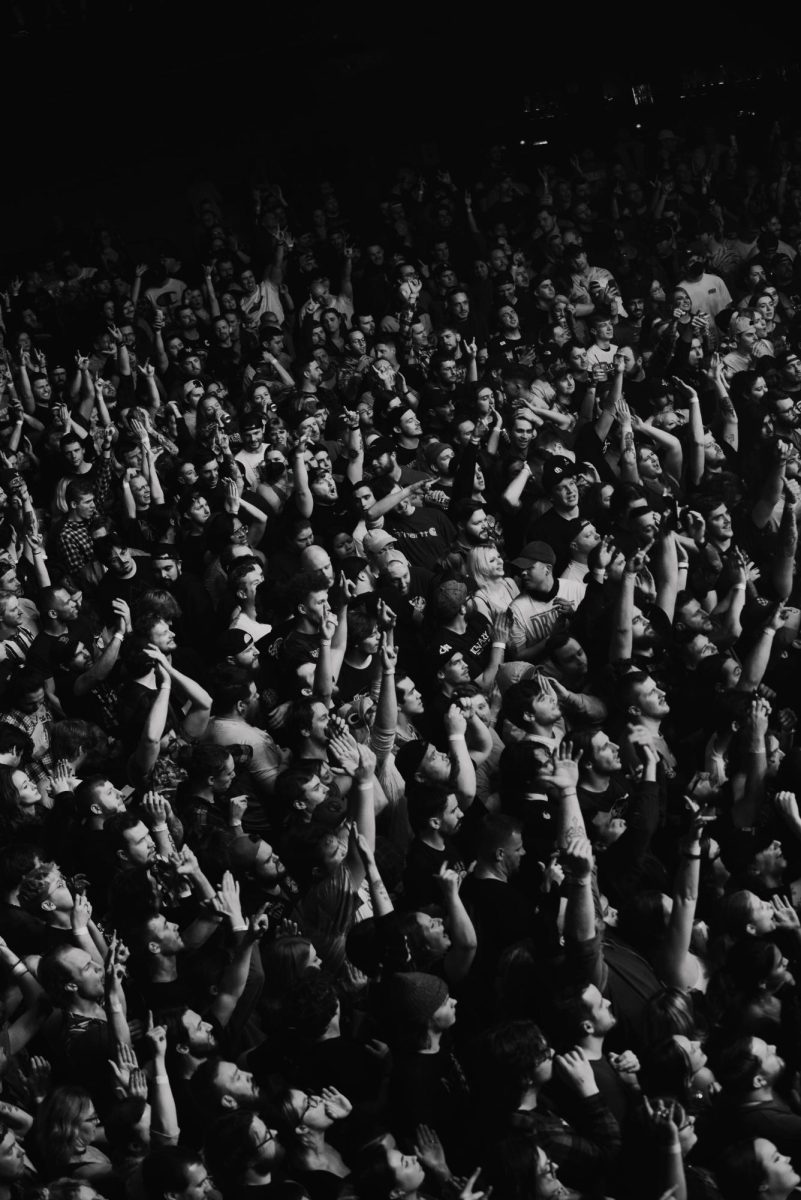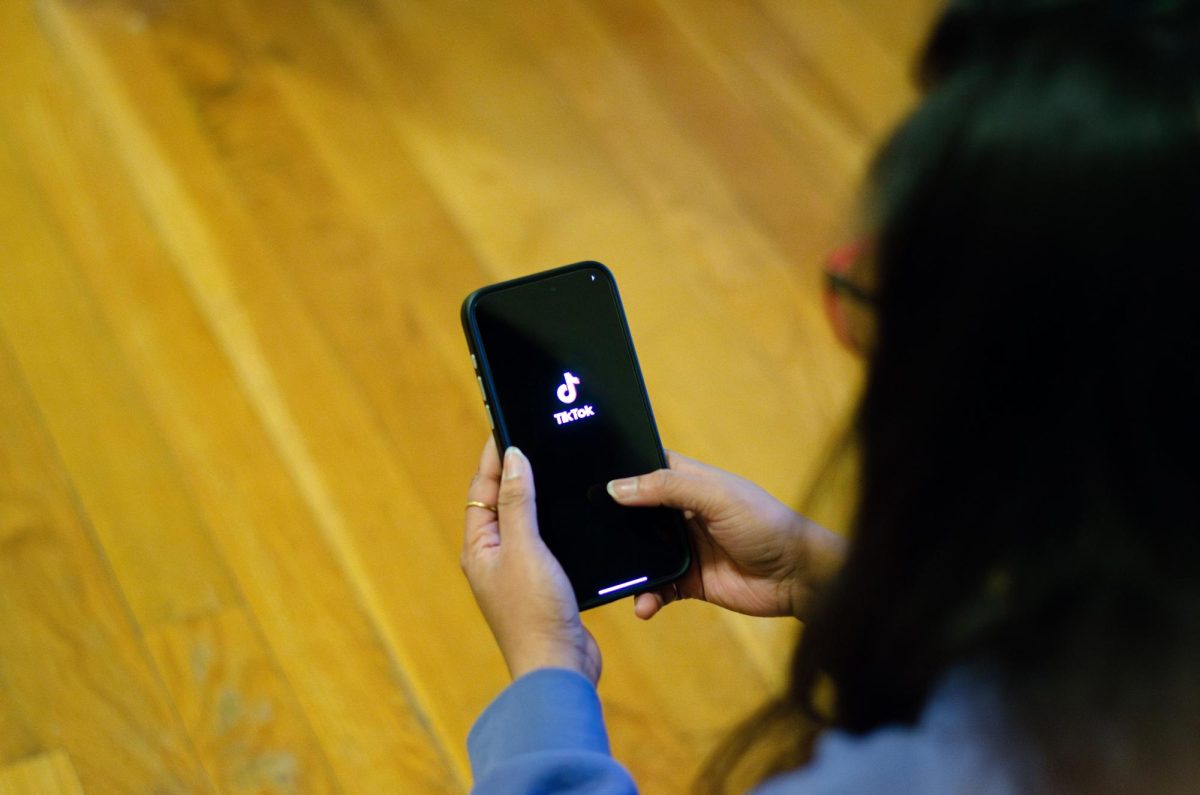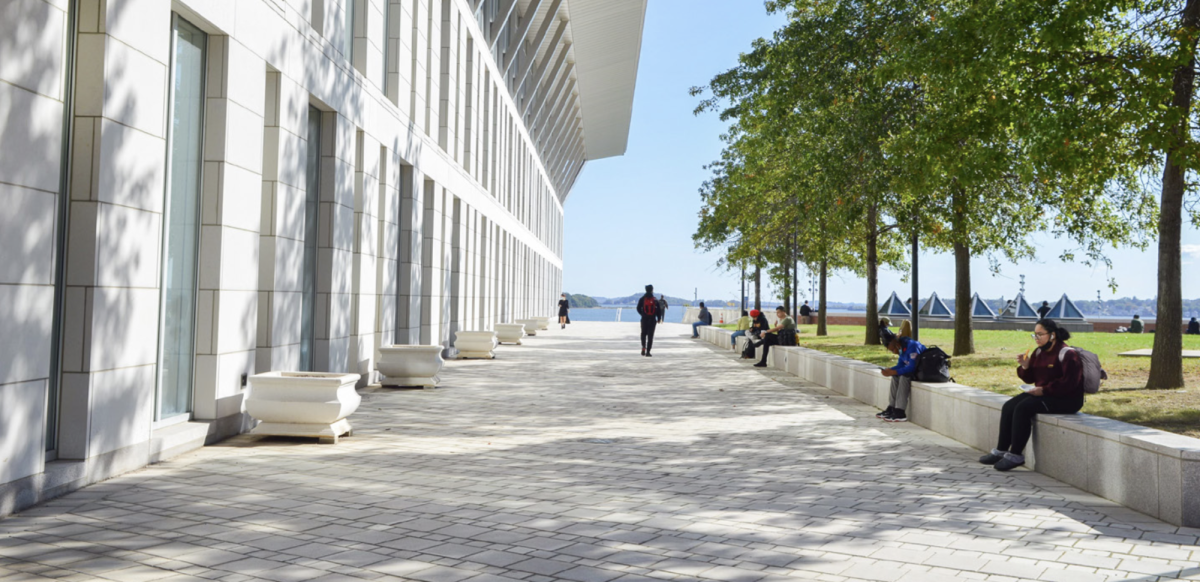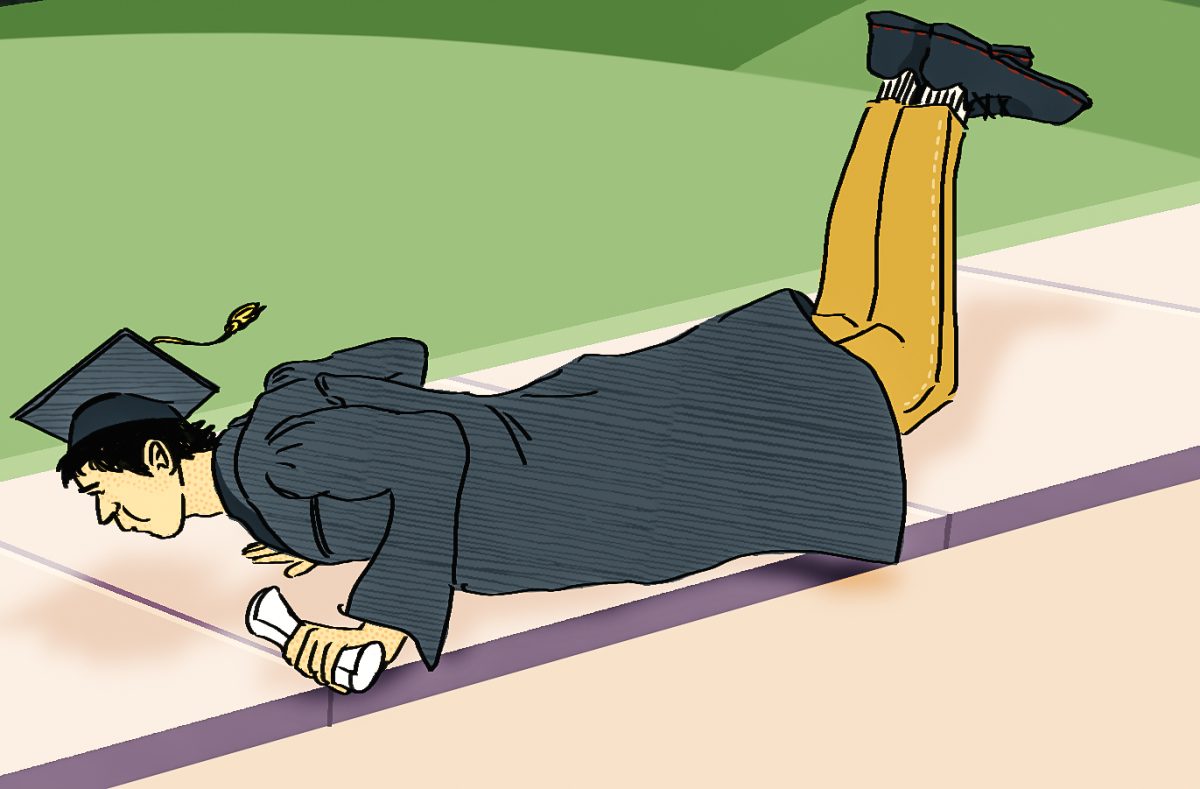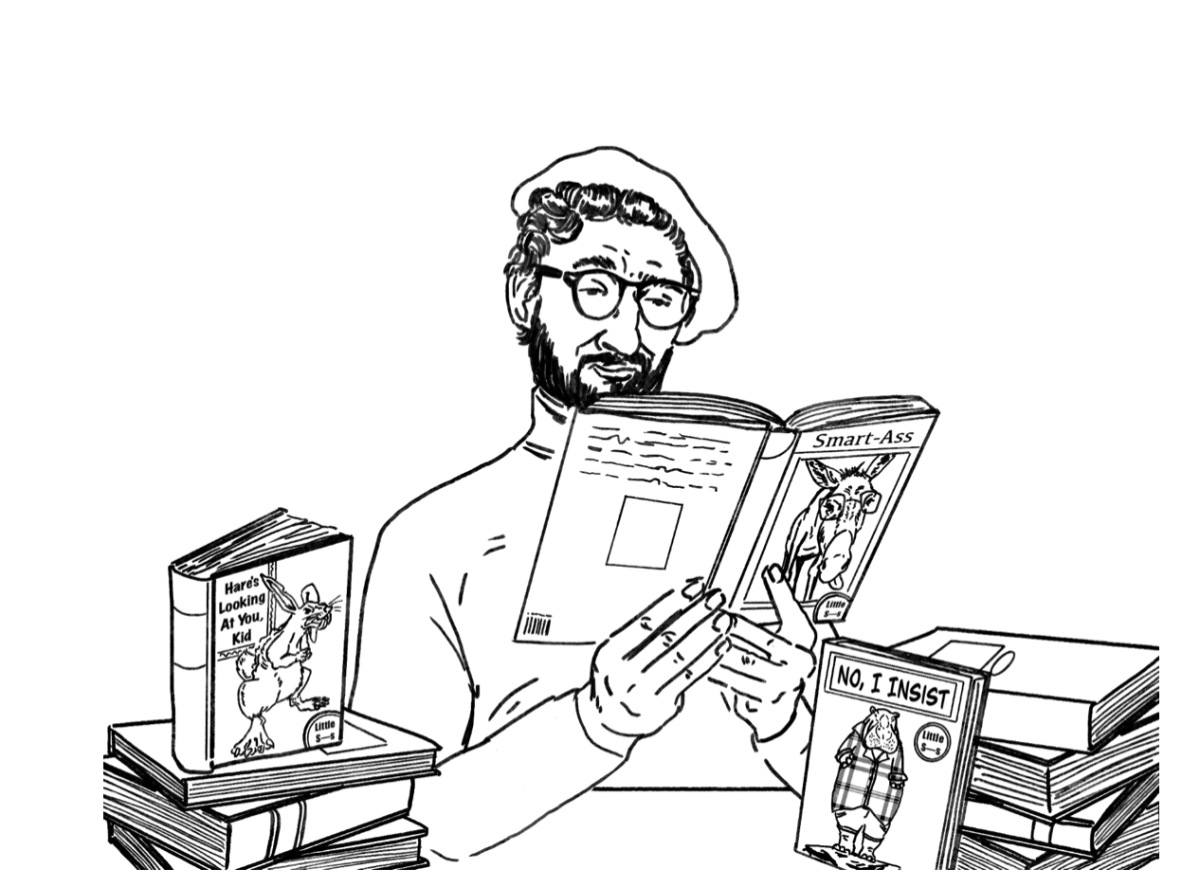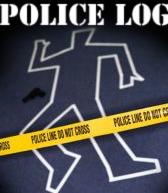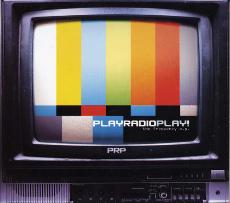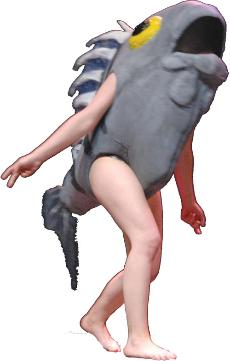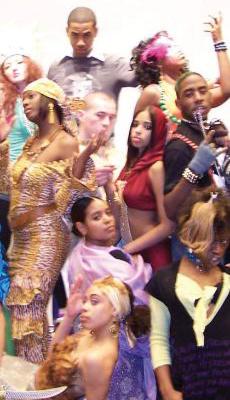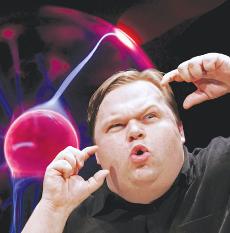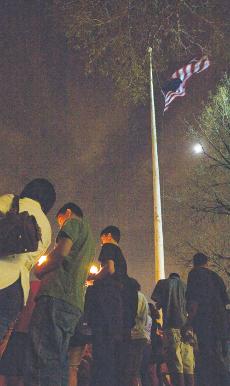The Modern Arts Monster Invades Campus
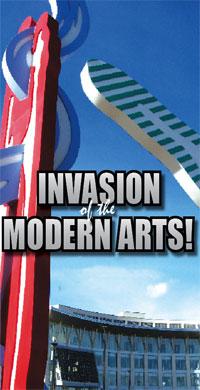
February 12, 2007
At UMass Boston, we are surrounded by art all the time. Arts on the Point is a campus-wide sculpture park with pieces scattered across the “quad” and in almost all of the buildings. The Harbor Art Gallery, located on the first floor of McCormack, is a student-run art gallery with exhibitions throughout the semester. Now, there is more. A new Roy Lichtenstein sculpture has been added to Arts on the Point and a new exhibit by Moudou Dieng called Painted with a little bit of science fiction is currently on display in the Harbor Art Gallery.
“These pieces are music you can’t hear, but you see it. It is like overriding the auditory faculty by the visual senses.” These are the words of Moudou Dieng, a West African artist whose work is currently being exhibited in UMass Boston’s own Harbor Art Gallery.
Dieng was born in Saint Louis, Senegal and currently lives and creates his art here in the US where he received his MFA from San Francisco Art Institute. “Art presented itself to me as a solution in my quest to find a refuge,” Dieng said.
Fascinated by the city, Dieng takes inspiration from the juxtaposition of bold advertisements and graffiti with harsh brick walls and concrete. The startling graphics and colors find their way into much of his work. Dieng says that one of his favorite pastimes is “to look at the walls that line central avenues and arteries”: the dichotomy of vividness and starkness combine to make one cohesive and visually intriguing piece.
The current exhibit is Painted with a little science fiction. Here Dieng has created collages of LP records, something many of us are not used to seeing used as musical devices let alone art. He then covered a basketball in gold, silver, and copper paint and bounced it across the collage of records. Much of Dieng’s mixed media work utilizes recycled materials, in this case the LP’s and men’s ties.
It’s strange for a music lover like myself to think about dozens of LP’s glued together and covered with paint, a bit angering, to be honest. But, once I see the art, all of that goes away. I no longer see them as precious collectors items that have been ruined, but now as the art they are supposed to be. Dieng has transformed audible art into visual art.
The exhibit goes on until Feb. 23 in the Harbor Art Gallery, which is located on the first floor of the McCormack Building, just to the left of the main entrance. Gallery hours are Monday, Wednesday, and Friday from 12-6 and Thursday from 9-6. The gallery is closed on Tuesdays and viewing on Saturday and Sunday are by appointment only. So, make your way down to the Harbor Art Galley and check out Painted with a little science fiction.
Surely you’ve already seen it, the new sculpture that graces the corner of the circle in front of the Campus Center. While we were away on winter break, Jan. 3 to be exact, Roy Lichtenstein’s Brushstroke Group was added to the collection of art. The piece is on long-term loan to the university from the Roy Lichtenstein Foundation.
Art Professor and Director of Arts on the Point Paul Tucker arranged the acquisition of the piece. Made of aluminum painted with bright colors, and consisting of five separate interweaved elements, the piece is meant to evoke the image of an artist running his paint laden brush through the air. The brushstroke is the most elemental aspect of painting, the roots of the medium. Lichtenstein experimented with the idea of these “brushstrokes” in many mediums throughout his life, drawings, paintings, collages, sculpture and prints.
Along with the steel structure of Huru, the metal “monster” who greets you on the lawn in front of the school as you ride in every morning, Brushstroke Group is the most visible art on campus, welcoming anyone who ventures to the Campus Center. So, what do we think of it? In an online poll conducted by The Mass Media, 48 percent of those who voted think it is “cool” but not in the best spot, 29 percent “love it,” while only 19 percent think it is a “waste of money and space.” So, I guess it can be said that the majority of us here on campus are pretty happy with it. But, what do we know about the man behind the piece?
I’ll tell you what I know. Roy Lichtenstein was born in 1927 and was one of the biggest names, along with Andy Warhol, in the American pop art movement that formed in New York in the 1960’s. He attended Ohio State University where he earned his MFA and taught after a stint in the Army during World War II.
Lichtenstein helped to simplify abstract art, making it accessible to most everyone. Abstract artists who came before him, like William DeKooning, whose sculpture Reclining Figure can be found in the courtyard behind the Quinn Building, created deeply emotional, often times confusing art.
For many, abstract art was something they simply didn’t get, while Lichtenstein, Warhol, and others made the art simple and understandable, but at the same time as complex as anyone who came before them.
Lichtenstein, who died ten years ago, took his influences from the boldness of comic books and popular advertisements. In a blown up comic book style, Lichtenstein presented scenes of vividly surreal situations. He virtually abandoned this comic book style, for which he is best known, in the mid 60’s.
So, now joining the likes of Huru, Steelworker, Double Cubes, Black, Searchburst, Gods, The Hero at Evening, Lagartos Reclining Figure and a handful of fantasy coffins is a piece by one of the biggest names in the history of American art. Welcome to Lichtenstein’s Brushstroke Group.


